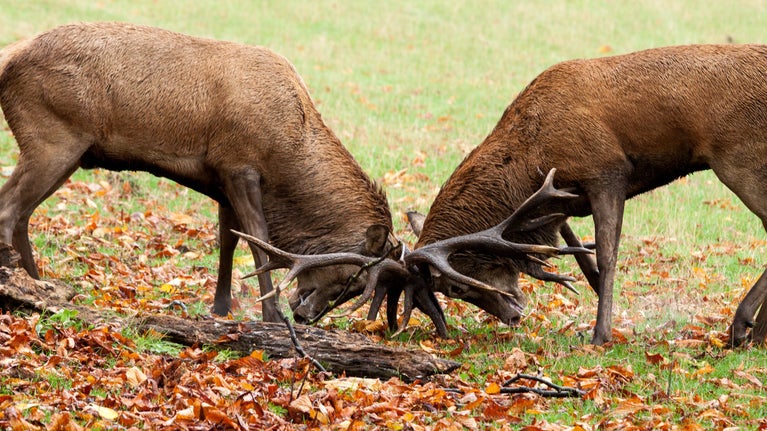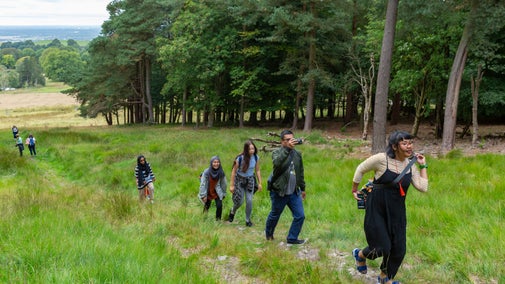
Explore the natural world
From learning how to identify trees to discovering the underwater world of rockpools, pick up some top tips to help you get closer to nature.

Many people use their mobile phones and satnavs to get around, but it’s also good to know how a compass works, just in case you're somewhere remote with no signal or if your battery's low. Plus, it’s more fun. Here are our top tips on how to read a compass, taken from our book, Go Wild in the Woods, by Goldie Hawk and Rachel Saunders.
There are a few important things you should know about how a compass works before using one in the wild.
There are four main points on your compass: north, south, east and west. Around the whole compass, there are little measurements, called degrees.
The most important part on the compass is the magnetic needle. It swings around the compass as you move, but the red end will always point in the direction of north and the white (or sometimes black) end will always point in the direction of south. There's also an arrow on the housing, known as the ‘orientation arrow’, and an arrow on the baseplate called the ‘direction of travel arrow’.

If you want to walk in an exact direction, you can ‘follow a bearing’. To follow a bearing, all you need to do is:

From learning how to identify trees to discovering the underwater world of rockpools, pick up some top tips to help you get closer to nature.
Find out how to make the most of your summer walking adventures with these top tips from our official outdoor partner, Cotswold Outdoor, plus details of our partnership discount.

Whether you wander along rugged coastal headlands or stroll around your favourite park, discover how walking in nature can help improve your general wellbeing.

Discover the best accessible trails to explore with pushchairs, wheelchairs and mobility aids across the places we look after. Get out in nature without having to go off the beaten track.

Explore some of the finest landscapes in our care on coastal paths, accessible trails, woodland walks and everything in between. Find the best places to walk near you.
